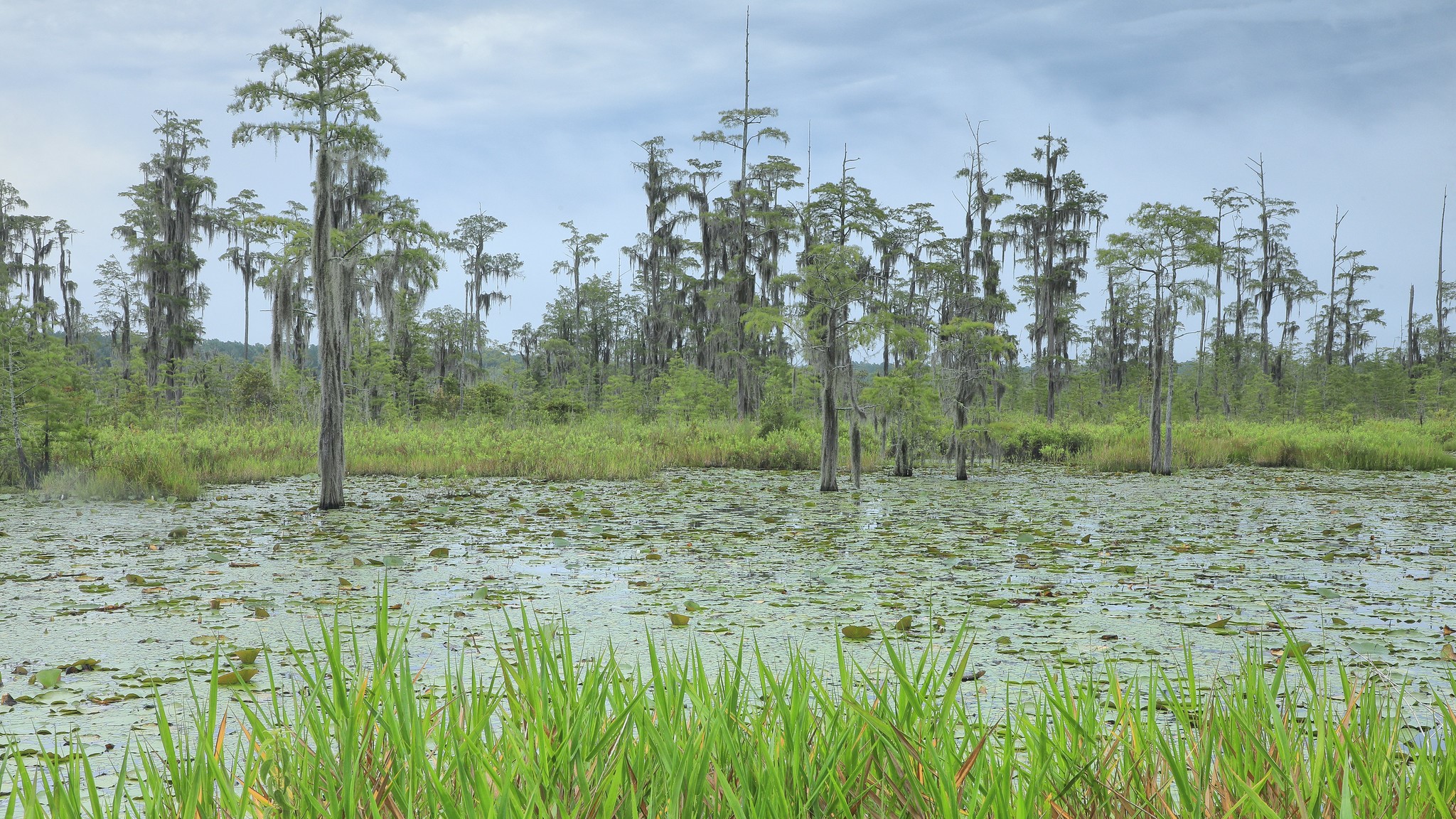The Future of Estuaries Under Climate and Land-Use Change

A new article by 2019-20 Global Change Fellow Lise Montefiore, Natalie Nelson (NCSU), Michelle Staudinger (NE CASC), and Adam Terando (SE CASC), Vulnerability of Estuarine Systems in the Contiguous United States to Water Quality Change Under Future Climate and Land-Use, has been published in the journal Earth’s Future. Read a news release written by Matt Shipman for the NCSU News page here.
Future changes in precipitation and land-use may increase the abundance of harmful nutrients in surface water runoff, drastically impacting the water quality of lowland estuaries, according to a new study.
The resulting ecological degradation can have a variety of consequences, including decreased levels of dissolved oxygen, loss of seagrasses, increased prevalence of harmful algal blooms, and coral reef decline. However, the effects of this degradation will vary across estuaries located within the United States.
A group of researchers led by Lise Montefiore and Natalie Nelson at NC State University recently reported that as climate and land-use change continue to alter the landscape, the nutrient loading from surface water runoff will likely increase for estuaries, especially those located in the Atlantic and eastern Gulf of Mexico.
Estuaries are regions where freshwater and seawater meet, such as the large, well-studied Chesapeake Bay in the Atlantic. Freshwater inputs from upstream lands are mainly gathered by surface water runoff and can be altered by changes in precipitation (which is impacted by climate change) as well as land-use and land-cover (LULC) changes. These inputs often contain nutrients such as phosphorus and nitrogen which can disrupt the balance of the estuary environment, leading to negative effects such as increased harmful algal blooms. This has been a major factor in the eutrophication of the Chesapeake Bay which took government action to resolve.
“Many vulnerability studies have been done in the past. Researchers have studied the vulnerability of coastal communities to inundation due to sea level rise, warming temperatures, as well as socioeconomic dimensions,” adds Montefiore. “The outputs of these vulnerability assessments provided critical information regarding the roles of climatic and marine-based drivers of estuarine change but did not include terrestrial-based drivers, which are also responsible for estuarine ecosystems degradation.”
The researchers began by modeling the change in total phosphorus and nitrogen nutrient loads under climate and land-use changes and developing a framework to identify estuarine systems that might be more susceptible to water quality degradation. Researchers applied the model to 112 estuaries across the contiguous United States.
“Our goal was to create a comprehensive map that takes into account not only physical indicators such as changes in nutrient loading, but also ecological and social factors,” says Montefiore. “This integrated approach allows us to gain a more complete understanding of the conditions of estuarine systems and provide a holistic picture of the challenges they face.”
The conceptual framework they developed defines overall estuarine system vulnerability as a function of exposure, sensitivity, and adaptive capacity.

To quantify exposure, or how nutrient loads might increase under climate and land-use changes, the authors estimated the total nitrogen and phosphorus load for the historic period 1990-2020 and the future period 2035-2065 under multiple land-use and climate model scenarios. In order to conduct her analysis, Montefiore used the resources provided by the Southeast Climate Adaptation Science Center.
“When I started my PhD, I didn’t have any familiarity with climate models, which require a good understanding of how they can be used in different contexts,” says Montefiore. “Therefore, my PhD advisor, Natalie Nelson, and I contacted the Southeast Climate Adaptation Science Center.”
Montefiore became a Global Change Fellow in 2019 where she was exposed to seminars introducing Global Climate Models and how they could be used within the context of her research. Adam Terando, who is a co-author on the paper and a research ecologist with the SE CASC, was on Motefiore’s doctoral committee and further helped integrate climate models into the research. Montefiore was also a Science to Action Fellow with the National Climate Adaptation Science Center. Michelle Staudinger, a researcher with the NE CASC was her mentor and a co-author on the publication.
In addition to measuring exposure, the researchers also evaluated the sensitivity of estuarine systems to nutrient loading.
According to Montefiore, “the response of estuarine systems to nutrient enrichment can vary greatly. Some estuaries may be able to quickly flush out increased nutrients, while others may have a slower response. If an estuary has a longer residence time, there is a higher likelihood of observing negative impacts.”
Finally, Montefiore gathered existing data to quantify the adaptive capacity of the estuaries, which aims to represent the magnitude of existing socio-ecological resources available to an estuarine system to cope with, adapt to, or mitigate changes in nutrient loads. Adaptive capacity was composed of human and natural adaptive capacity. Human adaptive capacity was represented by a region’s access to scientific knowledge and legislative/governmental actions already taken in a region. Natural adaptive capacity was estimated by the density of wetlands per estuarine watershed. Wetland density was used as an indicator because wetlands are known to act as distribution sinks of nitrogen and phosphorus across the landscape, and therefore can prevent further nutrient loading of downstream receiving waters.
The model simulations showed that LULC change had a large impact on nitrogen and phosphorus loads in estuaries. Furthermore, they found that watersheds in the Atlantic and eastern Gulf of Mexico had the highest total nitrogen and phosphorus loads under the defined climate and LULC scenarios used.
“At the regional scale, we cannot really control climate change,” adds Montefiore. “However, we have the opportunity to manage lands in a sustainable way that will be less harmful for ecosystems such as estuarine systems.”
The study highlights the importance of considering both natural and social factors when assessing vulnerability to climate and land-use change, particularly in relation to the mitigation of increased nutrient loads in estuaries. The findings further emphasize the important role that local and regional decision-makers will play in addressing the issue.
This framework and resulting mapping applications can help local officials, decision makers, and managers understand the overall vulnerability of an estuary and plan for future impacts. The next step is further developing the framework to incorporate more regionally-specific factors and indicators that impact vulnerability. Research is also needed to determine how future nutrient loads can contribute to already existing ecological issues like harmful algal blooms.
Data and analyses from this study are available in an interactive, web-based application: https://lisemontefiore.shinyapps.io/estuarine_vulnerability/
– salmons –
- Categories:
